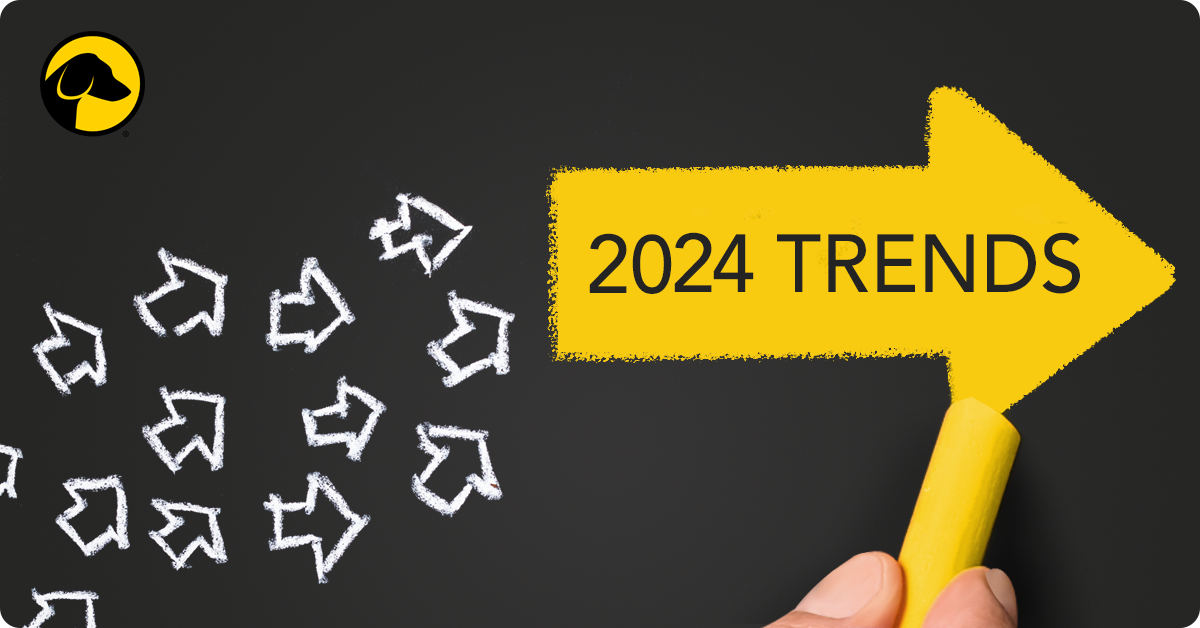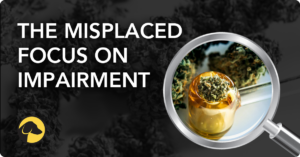
Cannabis Testing Trends to Watch in 2024
If impairment and fairness were the hallmarks of cannabis testing trends in 2023, this next year will be marked by evolutions in legislation and technology. We’re already seeing workplace marijuana regulations ripple and expand at the state level, with new laws taking effect in California and Washington at the start of the New Year. These laws will not only impact how employers can utilize workplace drug testing, but will also determine which tests they can use and when they can use them.
The types of testing technologies available to employers are shifting, opening the door to new sample types like cannabis breath testing. We’ve asked a selection of thought leaders in the legal, research, and science fields to share the cannabis testing trends they see unfolding in 2024.
TAE PHILLIPS – EMPLOYMENT ATTORNEY, OGLETREE DEAKINS
I think employers can simply look to a usual suspect – California – to see the next great challenge in the world of workplace marijuana issues. As many employers know, California A.B. 2188 took effect on January 1, 2024. This law generally limits California employers from taking adverse employment action based on a marijuana test that tests for “non-psychoactive THC/cannabis metabolites.” In addition, California employers will be prohibited from taking adverse employment action based on marijuana use outside of the workplace.
This law – while lacking in practicality – signals what I believe to be the next trend of marijuana-related legislation impacting the workplace. Since the law was passed in September 2022, we have already seen similar legislation passed in Washington. And, while employers in New York and a handful of other states are dealing with the challenges of “off-duty conduct laws,” the added testing restriction element introduced by California adds an entirely new wrinkle to an already difficult issue. And, employers should remain mindful that marijuana legalization itself began in California; A “left to right” march of legislation is certainly foreseeable.
With all of this in mind, employers must learn to adapt and strategically consider new THC testing technologies to comply with these laws and help manage safe workplaces.
ASHLYN HAZARD – DATA ANALYST, HOUND LABS
From a data standpoint, a large majority of employers will be impacted by California A.B. 2188. This leads me to believe one of the leading trends we’ll witness in 2024 is a swell of employers moving from legacy test types like urine to recent use testing technology like cannabis breath testing as they seek to comply with the new law.
To calculate the potential impact, we first need to analyze the number of potentially impacted employees. The U.S. Census Bureau estimates roughly 15.7M people are employed in the state of California and the National Survey on Drug Use and Health reports that about 43.4% of companies have a workplace drug testing program. For simple math, let’s assume that employees are equally distributed across employers, indicating roughly 6.8M individuals employed in California are likely to be impacted by A.B. 2188.
Next, we need to turn our attention to existing drug testing data. The Quest Diagnostics Drug Testing Index estimates that nearly 61% of all tests are either general workforce urine or hair. Since A.B. 2188 explicitly requires employers to test for active THC, we know employers will no longer be able to use urine and hair tests that detect the non-psychoactive metabolites of cannabis.
After calculating the employee sample size and the existing urine and hair testing figures, we can estimate that about 4.2M persons employed in California will be impacted by A.B. 2188. If their employers want to continue to mitigate the safety risks caused by workday cannabis use, they will need to turn toward a test type like breath that isolates the THC molecule.
AARON ATKINSON – EXECUTIVE VICE PRESIDENT OF MARKETING, HOUND LABS
Several states have already implemented laws similar to CA A.B. 2188 aimed at accommodating employees who use cannabis outside the workplace during non-work hours. If more states follow suit in 2024 and beyond, employers will face important decisions about how to update their testing policies.
While some employers may consider dropping cannabis testing as a response, this action limits their ability to detect and deter cannabis use at work. Removing THC testing can also increase an organization’s exposure to additional safety risks and costs associated with workday cannabis use. The National Safety Council reports that 53% of employers experienced an increase in workplace safety incidents when they stopped testing for THC.
These laws often state that employers are still obligated to maintain drug- and alcohol-free workplaces. For example, CA A.B. 2188 references language that says employees may not possess, be impaired by, or use cannabis on the job. This language aligns with the American College of Occupational and Environmental Medicine, which reads, “Employers…have an ethical responsibility to prevent impaired workers from exposing themselves, their co-workers, and/or the general public to risk of harm.”
Instead of responding to changing laws by discontinuing THC testing, a better option is likely to re-evaluate the available tools that support workplace safety goals while enabling compliance with the recent use obligations of the new laws. A cannabis breath test is a scientifically valid drug screen that detects active THC molecules in the breath. Because it measures the psychoactive components of the drug instead of its metabolites, the results reflect only recent use that is relevant for hiring and employment decisions.
As we consider the data Ashlyn shared above and the risks associated with dropping THC testing, we anticipate employers will need more support in 2024 as they revise their testing policies to account for changing laws and recent use cannabis testing. When considering a new testing method, organizations are always encouraged to review and revise their testing policies with the help of legal counsel. Communicating with employees and applicants is also key to helping them fully understand relevant policy changes.
DEBKISHORE MITRA – CHIEF TECHNOLOGY OFFICER, HOUND LABS
Workplace safety and employee fairness are key to employee drug testing, but how employers measure and balance these two concepts may take a more scientific lean in the future. The advancement of recent use cannabis testing is propelling employers to develop a stronger understanding of the nuances between different drug tests. This trend will likely play out in 2024 as employers seek data to support claims of detection windows and accuracy, searching for a solution with the performance characteristics needed to strike a nuanced balance between workplace safety and employee fairness.
From a scientific perspective, and in response to the “off-duty conduct laws” mentioned above, I sense that many employers will begin paying attention to the biology of each sample type and the detection window of each test. Historically, standard samples such as hair and urine have allowed the detection of marijuana metabolites for an extended period: weeks to months. In the era of cannabis legalization, these legacy samples and their long detection windows no longer provide the relevant information employers need to make fair employment decisions based on workday cannabis use.
Recent use tests such as breath, however, detect the active THC molecule and provide a tight detection window of 2-3 hours, enabling employers to comply with new “off-duty conduct laws” and make adverse action decisions based on objective results that correlate to the workday.
REBECCA ROBERTS – SENIOR VICE PRESIDENT, EMPLOYER SOLUTIONS
All around us, we’re seeing health technologies modernize to fit new market opportunities and demands. From a technology standpoint, the drug testing industry is poised to digitally modernize to improve HR functions and processes. Previously, drug testing has tried to make things faster and fairer for employers and employees with concepts like rapid and instant testing. But to truly blend digital optimization with accurate and reliable testing, the industry will need to make the entire process – from collection to data-driven employment decisions – seamless, paperless, and integrated for collectors, clinics, HR roles, and drug testing program managers.
Hound Labs integrated an exclusively paperless electronic chain of custody with our cannabis breath testing solution. Historically, the industry has used a paper-based system that is manually burdensome, environmentally wasteful, prone to errors, and hard to track. We have combined the breath test, collection equipment, on-screen instructions, and lab integration into a single system-guided process. This intuitive, easy-to-follow, guided collection eases the burden on collectors, provides status updates to employers, and improves transparency for those being tested.
In 2024, the drug testing industry will not only be facing legislative challenges, but it may be finally compelled to provide technologically advanced testing solutions that are more convenient, user-friendly, and automated to ensure reliable and repeatable results over and over again.
FINAL THOUGHTS
One last item to watch will be the potential federal rescheduling of cannabis. Late in 2023, the Department of Health and Human Services (HHS) advised the Drug Enforcement Administration (DEA) that cannabis be reclassified from a Schedule I drug to a Schedule III drug. If approved, cannabis would be considered an acceptable medical treatment and require a prescription. Rescheduling cannabis would NOT legalize the sale of marijuana or its products for recreational use at the state level.
Regardless of any potential ruling, cannabis is still a controlled, psychoactive, safety-impacting substance and employers still need to, and have a right to, mitigate its risks. The ability to test for recent cannabis use is still critical. With emerging laws, it may become more critical as legalization increases access to and use of the drug – which then increases safety impacts, risks, and costs.
For more information about recent use cannabis breath testing, please reach out to our experienced team who can answer all your questions.

January 11, 2024
By TRICIA O'CONNOR
Director of Content + Brand Strategy
Share











